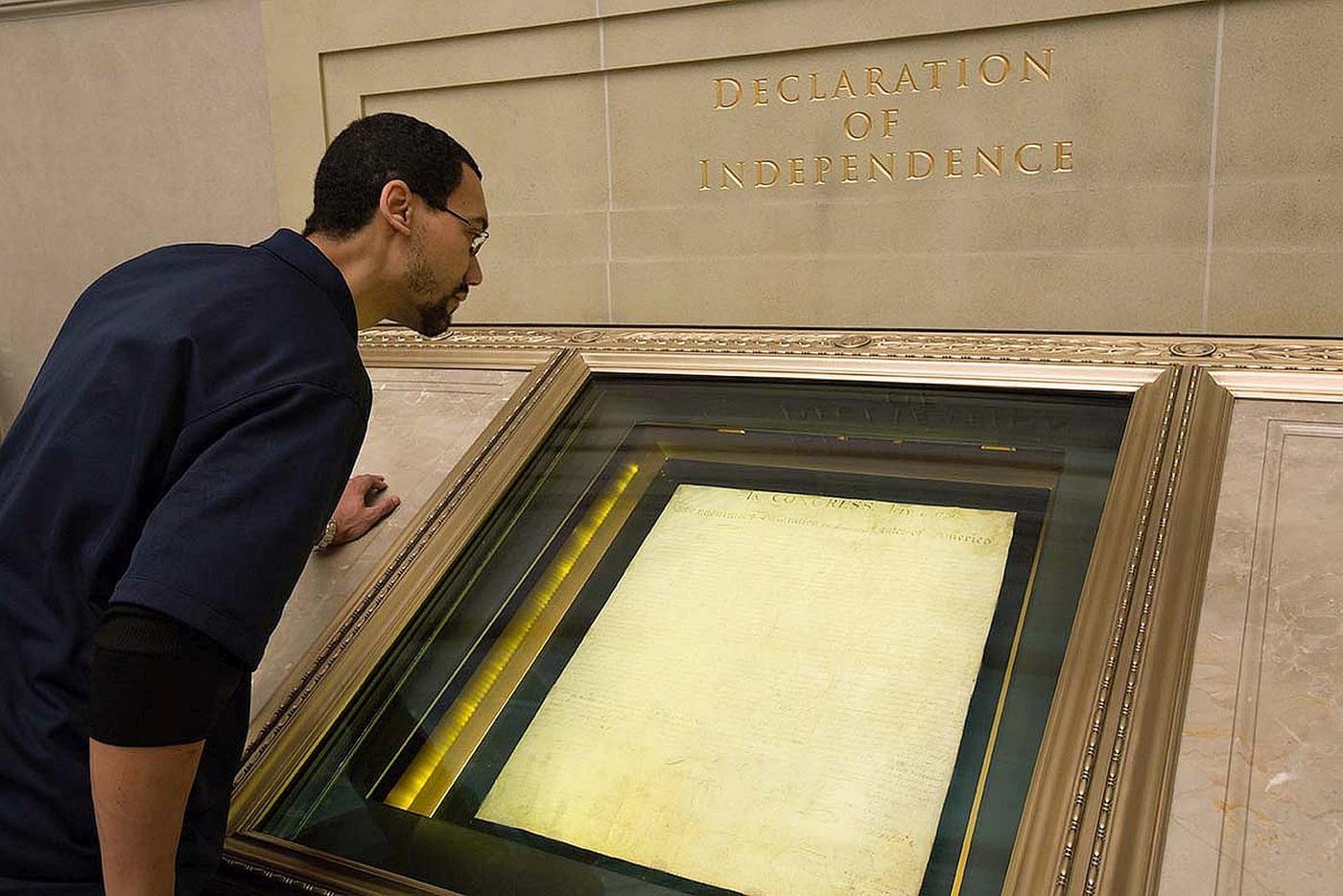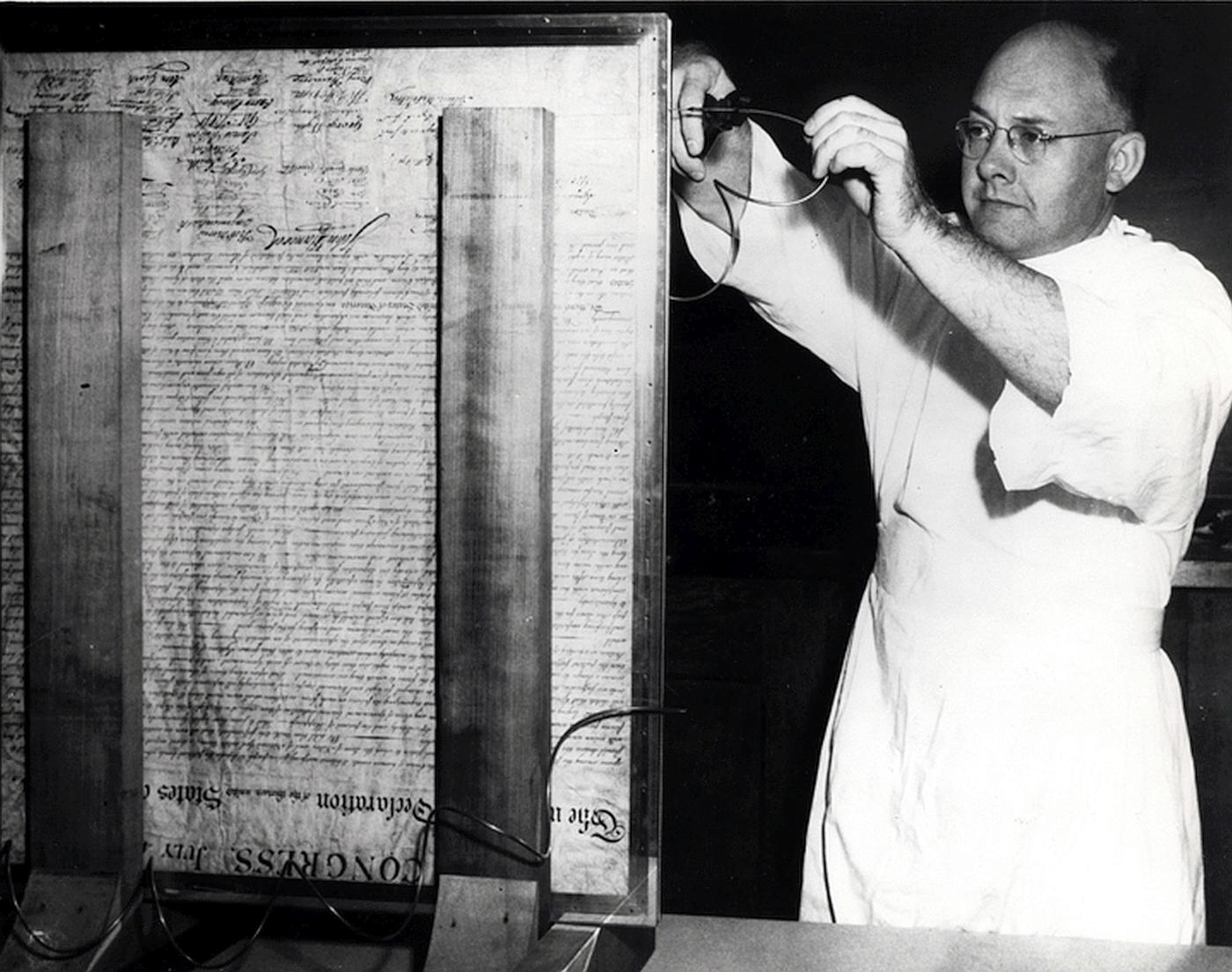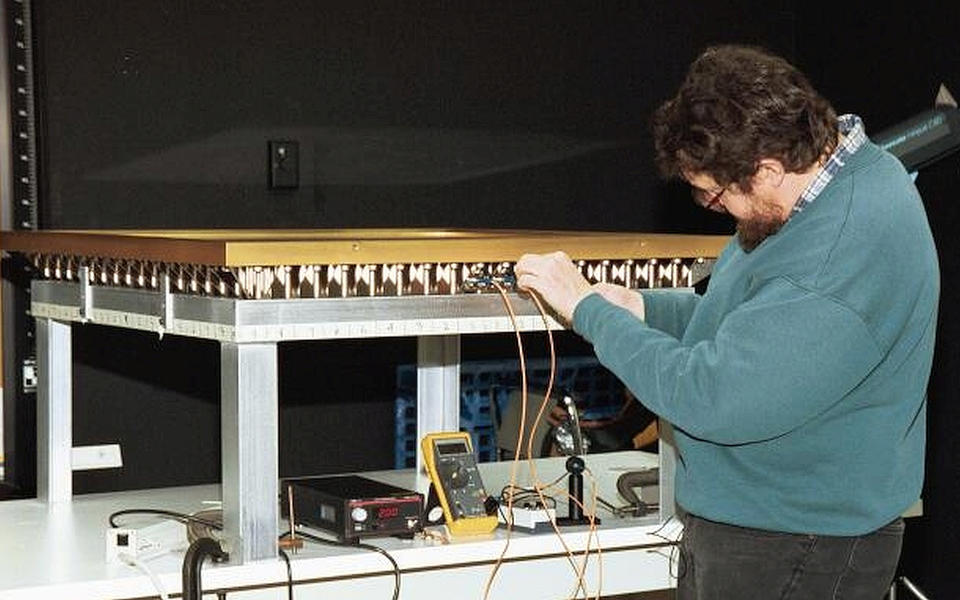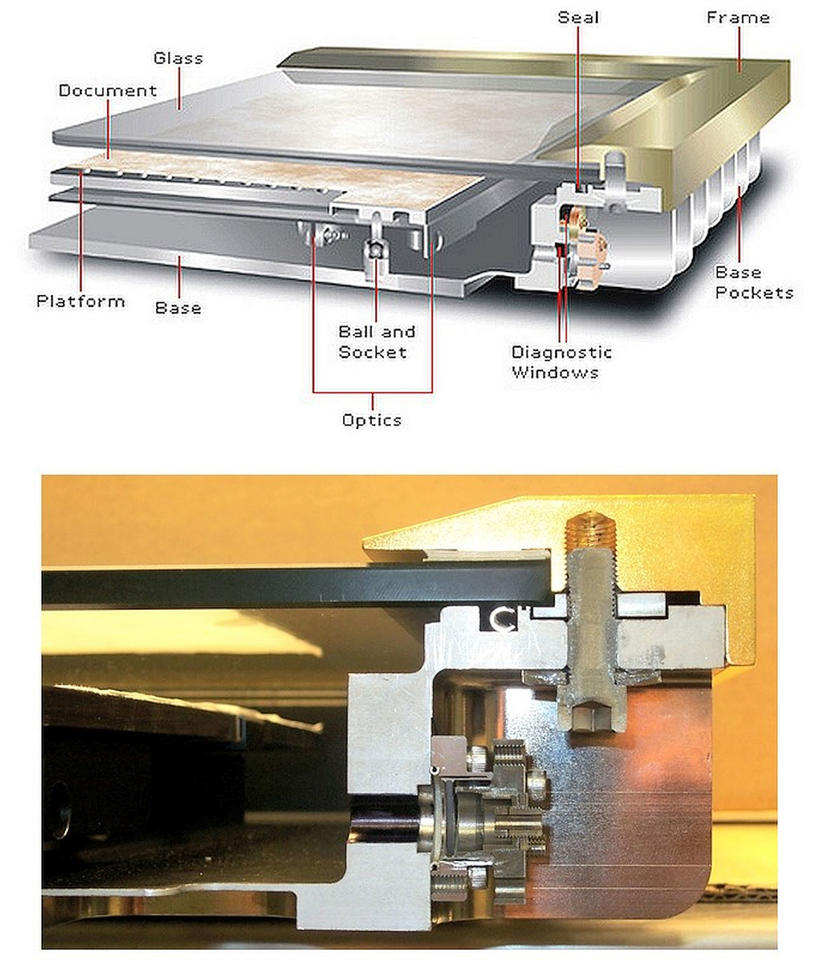Using Science to Preserve America’s Founding Documents
- America's founding documents are more than 200 years old.
- NIST experts have created bespoke encasements for these documents to preserve them for history.
- The cases include the ability to monitor the environment inside the case to keep the documents safe.
The Declaration of Independence, the Constitution of the United States and the Bill of Rights — the three documents known collectively as the Charters of Freedom — have documented Americans’ rights for more than 200 years.
But preserving centuries-old paper is not easy, and experts at the National Institute of Standards and Technology (NIST) have done this twice.

1940s and 1950s
In 1940, the Library of Congress asked NIST, then known as the National Bureau of Standards, to design and manufacture “sealed receptacles” that would protect the Declaration and the Constitution while providing the public with an unobstructed view. (The Bill of Rights was later added to the scope of the effort.)
The project, delayed by World War II, was finally completed in 1951 when NIST engineers permanently sealed (or so they thought then) all three documents. They placed the documents inside state-of-the-art (at the time) glass and metal encasements and delivered them to the documents’ new home, the National Archives and Records Administration (NARA) in Washington, D.C.
The cases kept their treasured contents free from temperature variations, light and humidity, as well as oxygen, the most destructive enemy. (The chambers were filled with helium, an inert gas.)
The encasements included:
- Electronic leak detectors built into the frame.
- Laminated glass that absorbed harmful ultraviolet light.
- A pure cellulose backing that removed any moisture.

1990s and 2000s
In 1995, Archives preservationists, with the help of NASA technology, examined the encasements and detected microscopic fissures in the glass plates that held the document pages upright for viewing. They feared that the cracks would eventually let in pollutants. Additionally, constant contact between the parchment and the glass threatened to lift the ink off the pages. Correcting these problems was practically impossible because the cases had been soldered shut and could not be opened without compromising the protective helium atmosphere.
So, the Archives again turned to NIST for a scientific solution.
A team of scientists, engineers and technicians from NIST, NARA, NASA and the private company Heery International spent the next four years designing, fabricating and testing replacements for the outdated 1951 preservation system.

The experts added an aluminum base and titanium frame, made from single pieces of metal to eliminate potentially leaky seams. Instead of the previously used helium, the preservationists used argon gas inside the encasement because argon has larger molecules to minimize leakage.
They also added:
- Laminated, tempered glass that does not touch the parchment.
- Built-in window ports, sensors and instrument bays for monitoring the internal environment.
- Flexibility to position a document for optimal viewing by all visitors.
Most importantly, the documents’ new home had the ability to open the case and reseal it when necessary.

Since its completion in 2003, more than a million people have visited the Rotunda of the National Archives annually to see “America’s Founding Documents” safe in their NIST-built homes.
Did You Know?
The encasement makes a cameo in the 2004 movie National Treasure. Treasure hunter Benjamin Gates (Nicolas Cage) carries the still-encased Declaration of Independence out of the National Archives Preservation Room to save it from thieves. While the scene is thrilling, it does bend the facts in three ways:
- The encasement is designed to be easily lifted by two people. One person, as seen in the film, cannot do it alone.
- The encasement is rigidly sealed by 66 steel bolts. It would be impossible for anyone to remove all of them in the short elevator ride.
- The glass of the encasement is a two-layer, heat-tempered sheet that can withstand variations in barometric pressure and temperature but not bullets. In the film, Gates protects himself from gunfire by holding the encasement in front of him.

